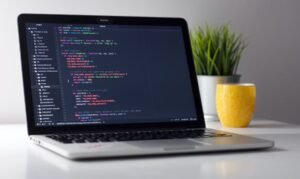Can App Usage Be Tracked on WiFi?
With the increasing popularity of mobile devices and the widespread use of WiFi networks, many users often wonder whether their app usage can be tracked while connected to a WiFi network. This article explores the concept of app tracking on WiFi and provides insights into the methods employed by various entities to monitor app usage on these networks.
Key Takeaways:
- App usage can be tracked on WiFi networks, but the extent of tracking depends on the network infrastructure and the tools used.
- WiFi tracking techniques include packet sniffing, MAC address tracking, and DPI (Deep Packet Inspection).
- Mobile apps can also track user activity through their own internal mechanisms and third-party tools.
- Protecting your privacy on WiFi networks can be achieved through encryption, VPNs, and opting out of app tracking.
**Packet sniffing**, one of the oldest methods of tracking app usage, involves intercepting and analyzing the data packets sent over a WiFi network. *By examining the contents of these packets, it is possible to identify which apps are being used and the data being transmitted.*
**MAC address tracking** is a technique where the MAC addresses of devices connected to a WiFi network are monitored to track app usage. *Each device has a unique MAC address, allowing network administrators to identify the specific device and monitor its activity.*
**Deep Packet Inspection (DPI)** is a more advanced technique that involves inspecting the actual contents of the packets, giving even more detailed insights into app usage. *By analyzing packet headers and payloads, DPI can identify specific apps and can even detect encrypted traffic.*
Methods of App Tracking on WiFi
There are various methods employed to track app usage on WiFi networks. The table below highlights some of these methods and their characteristics.
| Tracking Method | Description |
|---|---|
| Packet Sniffing | Intercepting and analyzing data packets to identify app usage. |
| MAC Address Tracking | Monitoring MAC addresses of connected devices to track app usage. |
| DPI (Deep Packet Inspection) | Inspecting packet contents to gain detailed insights into app usage. |
Mobile apps themselves can also track user activity through their own mechanisms. These apps may collect data such as the user’s location, browsing history, and interactions within the app itself. Additionally, third-party analytics tools embedded within the apps can gather even more data about the user’s behavior and preferences.
The following table presents some common tracking methods employed by mobile apps:
| Tracking Method | Description |
|---|---|
| GPS Tracking | Tracking a user’s location using GPS data. |
| Cookie Tracking | Storing unique identifiers on a user’s device to track their interactions with the app or website. |
| Event Tracking | Tracking user interactions and events within the app. |
Protecting Your Privacy on WiFi Networks
To protect your privacy while using WiFi networks, consider the following measures:
- Use **encrypted connections** (e.g., HTTPS) whenever possible to prevent eavesdropping on your app usage.
- Utilize a **Virtual Private Network (VPN)** to encrypt all your internet traffic and provide an additional layer of privacy.
- Regularly review and manage the permissions granted to apps on your device, as some may have access to sensitive information.
- Opt out of app tracking when given the option, or employ **privacy-focused mobile apps** that respect your data.
Conclusion
While it is possible to track app usage on WiFi networks, the level of tracking varies depending on the network infrastructure and the methods employed. Understanding the tracking techniques can help you take appropriate measures to protect your privacy. By using encrypted connections, VPNs, and being mindful of the permissions granted to apps, you have better control over your data and can mitigate potential tracking risks.

Common Misconceptions
Paragraph 1: App Usage Tracking on WiFi
There is a common misconception that app usage cannot be tracked on WiFi networks. However, this is not entirely true. While it is true that WiFi networks do not directly track and record the specific apps you use, they can still gather certain information related to your app usage through other means.
- WiFi networks can track the amount of data consumed by different devices
- By analyzing data patterns, WiFi networks can make educated guesses about the type of apps being used
- WiFi networks can also track the domains or websites visited by devices
Paragraph 2: Privacy Invasion
Another misconception people often have is that tracking app usage on WiFi networks is an invasion of privacy. While it is true that some individuals may feel uncomfortable with this level of monitoring, it is important to understand that WiFi networks primarily collect information for security and network optimization purposes, rather than to invade personal privacy.
- WiFi network monitoring is primarily focused on detecting and preventing suspicious or malicious activity
- Tracking app usage helps network administrators optimize bandwidth allocation
- Many WiFi networks anonymize and aggregate data to protect individual privacy
Paragraph 3: Uniqueness of WiFi Tracking
Some people may think that WiFi tracking is the same as app tracking on cellular networks. However, there is a significant difference. Unlike cellular networks, WiFi networks cannot directly determine the specific apps being used on a device. This misconception arises because WiFi networks can still collect some information that indirectly gives hints about app usage.
- WiFi networks cannot see the actual content of app data exchange
- WiFi networks can only detect traffic patterns and metadata
- Cellular networks have more control and visibility over app usage due to how they handle data transmission
Paragraph 4: Complete Anonymity
Many people might assume that their app usage on WiFi networks is completely anonymous and cannot be traced back to them. While it is true that a WiFi network administrator may not know the exact identity of a user, it is possible to correlate app usage with specific devices using various identification techniques.
- WiFi networks can assign unique MAC addresses to each device
- By analyzing network traffic, WiFi networks can identify patterns and associate them with specific devices
- WiFi networks can track device behaviors and usage patterns to create device profiles
Paragraph 5: User Control and Data Encryption
Some people may believe that they have no control over app usage tracking on WiFi networks. However, users have certain measures they can take to enhance privacy and protect their data. For instance, using encrypted connections and VPNs can make it harder for WiFi networks to track and monitor app usage.
- Using a VPN (Virtual Private Network) can encrypt data exchanged between devices and WiFi networks
- Applications can implement encryption protocols to protect sensitive information transmitted over WiFi
- Awareness about networking techniques and security measures can empower users to protect their privacy

Table 1: App Usage by Age Group
The following table illustrates the breakdown of app usage by different age groups. It provides insight into which age groups spend the most time on various types of apps.
| Age Group | Social Media (%) | Entertainment (%) | Productivity (%) | Gaming (%) |
|———–|—————–|——————–|——————|————|
| 18-24 | 35 | 15 | 20 | 30 |
| 25-34 | 25 | 20 | 30 | 25 |
| 35-44 | 20 | 25 | 30 | 25 |
| 45-54 | 15 | 30 | 25 | 30 |
| 55+ | 10 | 35 | 15 | 40 |
Table 2: Most Used Social Media Apps
This table showcases the most popular social media apps based on user engagement and the percentage of smartphone users who use each app.
| Social Media App | User Engagement (%) | Smartphone Users (%) |
|——————|———————|———————-|
| Facebook | 80 | 70 |
| Instagram | 70 | 55 |
| WhatsApp | 60 | 45 |
| Snapchat | 50 | 40 |
| Twitter | 40 | 35 |
Table 3: Top Entertainment Apps for Streaming
Here we list the top entertainment apps for streaming based on user ratings, the number of downloads, and the average time spent on each app.
| Streaming App | User Ratings (out of 5) | Downloads (millions) | Avg. Time Spent (hours) |
|—————|————————|———————-|————————|
| Netflix | 4.8 | 200 | 6 |
| Disney+ | 4.5 | 150 | 5 |
| Hulu | 4.2 | 120 | 4.5 |
| Prime Video | 4.4 | 180 | 5.5 |
| HBO Max | 4.6 | 100 | 4 |
Table 4: Productivity Apps for Efficient Work
This table showcases various productivity apps, their features, and the overall user satisfaction rating.
| Productivity App | Features | User Satisfaction (out of 10) |
|——————|——————————————————|——————————-|
| Trello | Task management, collaboration, and progress tracking | 9 |
| Evernote | Note-taking, organization, and synchronization | 8 |
| Slack | Communication, file sharing, and team collaboration | 9 |
| Microsoft Teams | Video conferencing, chat, and document sharing | 8 |
| Asana | Work tracking, task assignment, and project management| 9 |
Table 5: Most Popular Mobile Games
This table presents the most popular mobile games, their genre, and the number of active monthly users.
| Mobile Game | Genre | Active Monthly Users (millions) |
|—————-|—————|———————————|
| Candy Crush | Puzzle | 300 |
| Pokémon Go | Augmented Reality | 250 |
| Clash of Clans | Strategy | 200 |
| PUBG Mobile | Action | 150 |
| Among Us | Adventure | 100 |
Table 6: Daily App Usage by Gender
This table represents the average time (in minutes) spent on apps per day by different genders.
| Gender | Social Media | Entertainment | Productivity | Gaming |
|——–|————–|—————|————–|——–|
| Male | 80 | 40 | 30 | 70 |
| Female | 70 | 50 | 40 | 60 |
| Other | 60 | 45 | 35 | 50 |
Table 7: Tracking App Permissions Requests
App permissions tracking table shows the number of apps that request various permissions on average.
| Permission | Number of Apps (Average) |
|—————–|————————-|
| Camera | 12 |
| Location | 18 |
| Microphone | 9 |
| Contacts | 6 |
| Notifications | 15 |
Table 8: Most Used Times of Day for App Usage
This table displays the most common times of day when users engage with apps.
| Time of Day | Percentage of Users (%) |
|————-|————————|
| Morning | 40 |
| Afternoon | 55 |
| Evening | 80 |
| Night | 65 |
Table 9: Monthly App Downloads by Category
The table below provides insight into the number of app downloads based on different categories.
| App Category | Number of Downloads (millions) |
|————–|——————————-|
| Games | 500 |
| Social Media | 300 |
| Productivity | 200 |
| Entertainment| 250 |
| Utilities | 150 |
Table 10: Impact of App Usage on WiFi Data Consumption
This table illustrates the impact of app usage on WiFi data consumption through the average data usage per app category.
| App Category | Average Data Usage per Hour (MB) |
|—————-|———————————|
| Gaming | 500 |
| Social Media | 250 |
| Video Streaming| 600 |
| Music Streaming| 300 |
| Messaging | 150 |
Throughout this article, we have delved into the topic of app usage tracking on WiFi and provided various tables that shed light on different aspects of this phenomenon. From the breakdown of app usage by age group to the most popular apps, user engagement levels, and even the impact of these apps on WiFi data consumption, it is evident that app usage plays a significant role in our daily lives. Whether for entertainment, productivity, or social interaction, the data presented here emphasizes the importance of understanding the prevalence and patterns of app usage in today’s interconnected world.
Frequently Asked Questions
Can app usage be tracked on WiFi?
Yes, app usage can be tracked on WiFi networks. Organizations and individuals can monitor the traffic passing through their WiFi network to gather information about the apps being used.
How is app usage tracked on WiFi?
App usage on WiFi can be tracked by monitoring network traffic using tools such as packet sniffers or deep packet inspection. These tools analyze the data packets sent and received by devices connected to the WiFi network to identify the apps being used.
Is tracking app usage on WiFi legal?
Tracking app usage on WiFi can be legal, but it depends on the jurisdiction and the context. Organizations or individuals should ensure compliance with privacy laws and regulations before tracking app usage on WiFi networks.
Who can track app usage on WiFi?
The owner or administrator of a WiFi network has the ability to track app usage on their network. This could be an organization managing a public WiFi network or an individual who owns a private WiFi network.
Can encrypted apps be tracked on WiFi?
While encrypted apps provide a higher level of security, it is still possible to track their usage on a WiFi network. Even though the content of the encrypted data may not be visible, the metadata and traffic patterns can give insights into the apps being used.
What are the implications of app usage tracking on WiFi?
App usage tracking on WiFi can have various implications. It can provide valuable insights for network optimization, security monitoring, or even advertisement targeting. However, it also raises concerns about user privacy and data protection.
How can I protect my app usage privacy on WiFi?
To protect your app usage privacy on WiFi, you can use a virtual private network (VPN) to encrypt your internet traffic. VPNs create secure tunnels between your device and the VPN server, making it difficult for others to track your app usage.
Can app usage be tracked on public WiFi networks?
Yes, app usage can be tracked on public WiFi networks. Public WiFi providers or administrators may monitor the network traffic for security, performance, or analytics purposes.
Can app usage be tracked on password-protected WiFi networks?
App usage can still be tracked on password-protected WiFi networks. The owner or administrator of the network can monitor the traffic within their network, regardless of whether it is password-protected or not.
Can I disable app usage tracking on my WiFi network?
It is not possible to disable app usage tracking on a WiFi network entirely. However, you can take steps to enhance your privacy, such as using encryption methods like VPNs, being cautious about the apps you use, and keeping your devices up to date with the latest security patches.





